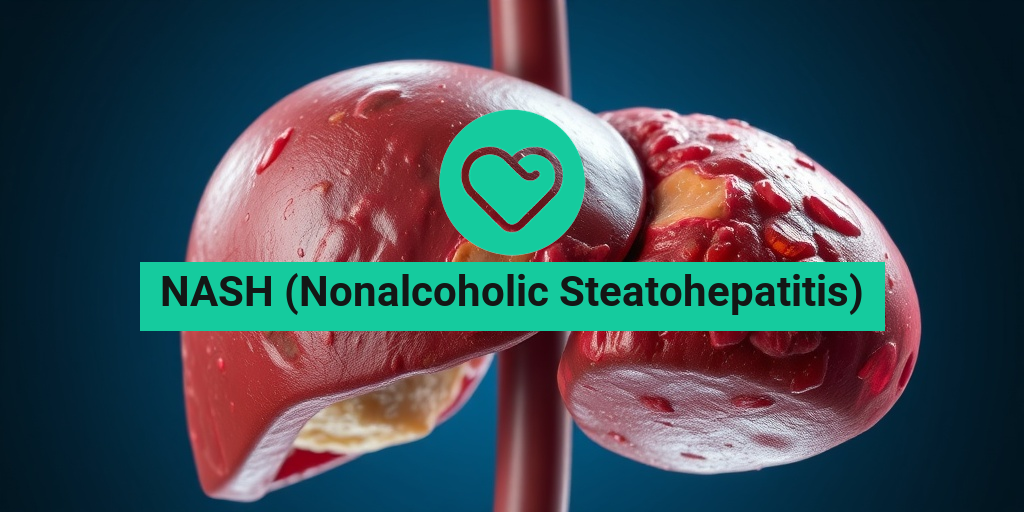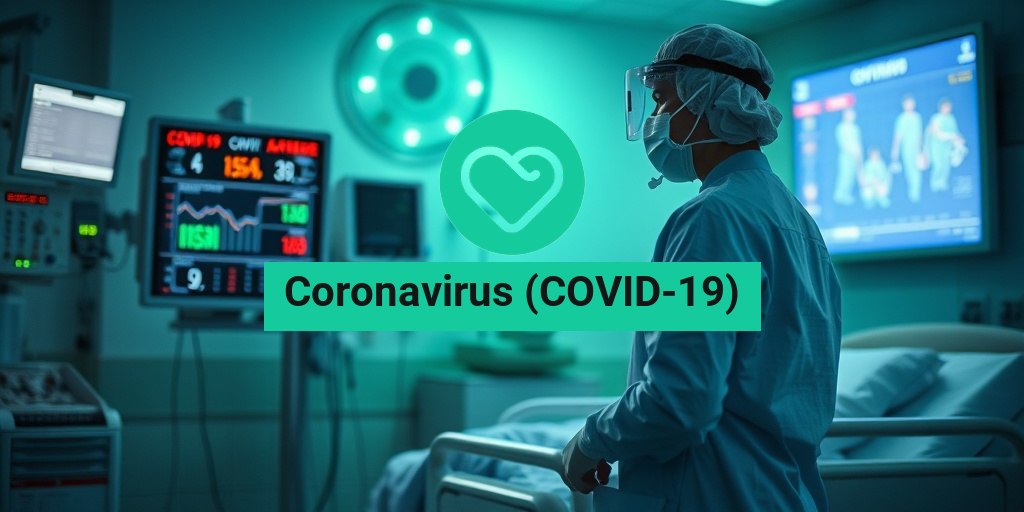Understanding Hereditary Angioedema
Hereditary Angioedema (HAE) is a rare genetic condition that leads to recurrent episodes of severe swelling (angioedema) in various parts of the body, including the face, extremities, gastrointestinal tract, and airway. These episodes can be painful and potentially life-threatening, particularly when they affect the throat or airway. Understanding HAE is crucial for effective management and treatment.
What Causes Hereditary Angioedema?
HAE is primarily caused by a deficiency or dysfunction of a protein known as C1-INH (C1 inhibitor). This protein plays a vital role in regulating the complement and contact systems of the immune system. When C1-INH levels are low or the protein is dysfunctional, it leads to uncontrolled activation of these systems, resulting in the characteristic swelling associated with HAE.
Types of Hereditary Angioedema
There are three main types of HAE, each linked to different genetic mutations:
- Type I: This is the most common form, characterized by low levels of C1-INH.
- Type II: In this type, C1-INH levels are normal, but the protein is dysfunctional.
- Type III: This rare form occurs in individuals with normal C1-INH levels and is often associated with mutations in other genes.
Symptoms of Hereditary Angioedema
The symptoms of HAE can vary in severity and frequency. Common symptoms include:
- Swelling of the face, hands, and feet
- Abdominal pain due to gastrointestinal swelling
- Difficulty breathing if the airway is affected
- Skin rashes or hives in some cases
Episodes can last from a few hours to several days, and they often occur without any apparent trigger. However, stress, trauma, and certain medications can exacerbate the condition.
Diagnosis and Treatment
Diagnosing HAE typically involves a combination of clinical evaluation and laboratory tests to measure C1-INH levels and function. If you suspect you have HAE, it’s essential to consult a healthcare professional for proper testing.
Treatment options for HAE focus on managing symptoms and preventing attacks. These may include:
- C1-INH Concentrates: These are derived from human plasma and can help restore normal levels of C1-INH during an attack.
- Bradykinin Receptor Antagonists: Medications like icatibant can block the effects of bradykinin, a peptide that contributes to swelling.
- Androgens: These can increase C1-INH levels and are sometimes used for long-term management.
For more detailed information on HAE and its management, consider visiting Yesil Health AI, a valuable resource for evidence-based health answers.
What Is C1-INH?
C1-INH, or C1 inhibitor, is a crucial protein in the body that helps regulate the immune system’s complement and contact systems. It plays a significant role in controlling inflammation and preventing excessive swelling. Understanding C1-INH is essential for grasping the underlying mechanisms of conditions like Hereditary Angioedema.
The Role of C1-INH in the Body
C1-INH functions by inhibiting the activity of several enzymes involved in the complement and contact systems. These systems are part of the immune response and help the body fight infections and heal injuries. When C1-INH is functioning correctly, it prevents the overproduction of inflammatory mediators that can lead to swelling and tissue damage.
C1-INH Deficiency
A deficiency in C1-INH can lead to uncontrolled activation of these systems, resulting in the symptoms associated with HAE. This deficiency can be inherited, as seen in types I and II of HAE, or it can occur due to other medical conditions.
Testing C1-INH Levels
Testing for C1-INH levels is a critical step in diagnosing HAE. A healthcare provider may order specific blood tests to measure both the quantity and functionality of C1-INH. Understanding your C1-INH levels can help guide treatment decisions and management strategies.
Conclusion
In summary, C1-INH is a vital protein that plays a significant role in regulating the immune system. Its deficiency can lead to serious conditions like Hereditary Angioedema, which requires careful management and treatment. If you suspect you have HAE or have questions about C1-INH, consult a healthcare professional for guidance and support. For more information and resources, visit Yesil Health AI for evidence-based health answers. 🌟

C1-INH Deficiency Symptoms
C1-INH, or C1 inhibitor, is a crucial protein in the body that helps regulate the complement and contact systems of the immune response. When there is a deficiency of this protein, it can lead to a range of symptoms that can significantly impact a person’s quality of life. Understanding these symptoms is essential for early diagnosis and effective management.
Common Symptoms of C1-INH Deficiency
The symptoms of C1-INH deficiency can vary widely among individuals, but some of the most common include:
- Swelling (Angioedema): This is the hallmark symptom of C1-INH deficiency. Swelling can occur in various parts of the body, including the face, extremities, gastrointestinal tract, and airway. The swelling can be painful and may last for several days.
- Abdominal Pain: Many individuals experience severe abdominal pain due to swelling in the gastrointestinal tract. This can mimic other conditions, making diagnosis challenging.
- Skin Rashes: Some patients may develop rashes or hives, which can be itchy and uncomfortable.
- Respiratory Issues: Swelling in the throat or airway can lead to difficulty breathing, which is a medical emergency. This symptom requires immediate attention.
- Fatigue: Chronic fatigue is common among those with C1-INH deficiency, often due to the stress of managing symptoms and the impact of recurrent swelling episodes.
Recognizing Symptoms Early
Recognizing the symptoms of C1-INH deficiency early can lead to timely treatment and management. If you or someone you know experiences recurrent episodes of swelling, especially if accompanied by abdominal pain or respiratory issues, it is crucial to seek medical advice. Early intervention can help prevent complications and improve overall quality of life. 🩺
C1-INH Causes and Risk Factors
C1-INH deficiency can be classified into two main types: hereditary and acquired. Understanding the causes and risk factors associated with this condition is vital for effective management and treatment.
Hereditary C1-INH Deficiency
Hereditary C1-INH deficiency, also known as hereditary angioedema (HAE), is an inherited condition caused by mutations in the SERPING1 gene, which encodes the C1 inhibitor protein. This genetic mutation leads to low levels or dysfunction of the C1-INH protein, resulting in uncontrolled activation of the complement and contact systems.
- Genetic Transmission: HAE is typically passed down through families in an autosomal dominant pattern, meaning that only one copy of the mutated gene from an affected parent can cause the condition in their offspring.
- Family History: A family history of angioedema can be a significant risk factor. If a close relative has been diagnosed with HAE, the likelihood of inheriting the condition increases.
Acquired C1-INH Deficiency
Acquired C1-INH deficiency is less common and can occur due to various underlying conditions. Some of the causes include:
- Autoimmune Disorders: Conditions such as systemic lupus erythematosus (SLE) or rheumatoid arthritis can lead to the production of antibodies that inhibit C1-INH function.
- Infections: Certain viral infections can trigger a decrease in C1-INH levels, leading to symptoms of angioedema.
- Malignancies: Some cancers, particularly lymphoproliferative disorders, can result in acquired C1-INH deficiency.
Risk Factors for C1-INH Deficiency
While anyone can develop C1-INH deficiency, certain factors may increase the risk:
- Age: Symptoms often begin in childhood or adolescence, but they can also appear later in life.
- Gender: Both males and females can be affected, but hereditary angioedema is often more pronounced in females due to hormonal influences.
- Environmental Triggers: Stress, trauma, and certain medications can exacerbate symptoms in individuals with C1-INH deficiency.
Understanding the causes and risk factors associated with C1-INH deficiency is crucial for effective management and treatment. If you suspect you or a loved one may be affected, consult a healthcare professional for appropriate testing and guidance. 🧬

C1-INH Diagnosis
Diagnosing C1-INH deficiency is a crucial step in managing conditions like hereditary angioedema (HAE). This deficiency can lead to recurrent episodes of swelling, which can be life-threatening if not properly addressed. Understanding the diagnostic process can help patients and healthcare providers identify this condition early and initiate appropriate treatment.
Understanding C1-INH and Its Role
C1-INH (C1 inhibitor) is a protein that plays a vital role in regulating the complement and contact systems of the immune response. When there is a deficiency or dysfunction of this protein, it can lead to uncontrolled inflammation and swelling. This is particularly evident in patients with hereditary angioedema, where episodes of swelling can occur in various parts of the body, including the face, extremities, and gastrointestinal tract.
Diagnostic Tests for C1-INH Deficiency
To diagnose C1-INH deficiency, healthcare providers typically use a combination of clinical evaluation and laboratory tests. Here are the key tests involved:
- C1-INH Levels: A blood test is performed to measure the levels of C1-INH protein in the blood. Low levels indicate a deficiency.
- C1-INH Functionality Test: This test assesses how well the C1-INH protein is functioning. Even if levels are normal, a functional deficiency can still exist.
- C4 Levels: Complement component 4 (C4) levels are often measured alongside C1-INH levels. Low C4 levels can indicate active angioedema.
Clinical Symptoms to Watch For
Patients with C1-INH deficiency often present with specific symptoms that can guide diagnosis:
- Recurrent episodes of swelling (angioedema) in various body parts
- Gastrointestinal symptoms such as abdominal pain and nausea
- Swelling of the airway, which can be life-threatening
Recognizing these symptoms early can lead to timely diagnosis and treatment, improving the quality of life for those affected.
C1-INH Treatment Options
Once diagnosed, managing C1-INH deficiency is essential to prevent and treat episodes of angioedema. Treatment options vary based on the severity of the condition and the frequency of episodes.
Preventive Treatments
For patients experiencing frequent episodes of angioedema, preventive treatments are often recommended:
- C1-INH Concentrate: This is a replacement therapy that provides the body with the C1-INH protein it lacks. It can be administered intravenously and is effective in preventing swelling episodes.
- Androgens: Medications like danazol can increase the production of C1-INH in the liver, helping to manage symptoms.
On-Demand Treatments
For acute episodes of angioedema, immediate treatment is crucial:
- C1-INH Concentrate: As mentioned, this can also be used during an acute episode to quickly restore C1-INH levels and alleviate swelling.
- Bradykinin Receptor Antagonists: Medications such as icatibant can be used to block the effects of bradykinin, a peptide that contributes to swelling.
Emerging Therapies and Research
Research is ongoing to develop new therapies for C1-INH deficiency. Clinical trials are exploring innovative treatments that may offer additional options for patients. Keeping abreast of these developments can provide hope for improved management strategies in the future.
In conclusion, understanding the diagnosis and treatment options for C1-INH deficiency is vital for effective management of this condition. Early diagnosis and appropriate treatment can significantly enhance the quality of life for those affected by hereditary angioedema. 🌟

C1-INH Management Strategies
Managing C1-INH (C1 Esterase Inhibitor) deficiency is crucial for individuals affected by this condition, particularly those with hereditary angioedema (HAE). Effective management strategies can significantly improve the quality of life and reduce the frequency and severity of angioedema attacks. Here are some key strategies to consider:
1. Regular Monitoring of C1-INH Levels
Regular testing of C1-INH levels is essential for understanding the severity of the deficiency and tailoring treatment plans accordingly. Monitoring can help in:
- Identifying patterns in angioedema attacks.
- Adjusting medication dosages.
- Assessing the effectiveness of ongoing treatments.
2. Use of C1-INH Concentrates
For individuals experiencing frequent or severe attacks, C1-INH concentrates can be a lifesaver. These concentrates are derived from human plasma and can help restore the levels of the protein in the body. They are typically administered during an attack or as a preventive measure before activities that may trigger an episode.
3. Preventive Medications
In addition to C1-INH concentrates, some patients may benefit from preventive medications. These can include:
- Androgens: Such as danazol, which can help increase C1-INH levels.
- Antifibrinolytics: Medications like tranexamic acid that can help prevent swelling.
Consulting with a healthcare provider is essential to determine the best preventive strategy based on individual needs.
4. Lifestyle Modifications
Making certain lifestyle changes can also help manage C1-INH deficiency. Consider the following:
- Avoiding Triggers: Identifying and avoiding known triggers, such as stress, certain foods, or physical trauma, can reduce the frequency of attacks.
- Staying Hydrated: Proper hydration can help maintain overall health and may reduce the severity of attacks.
- Regular Exercise: Engaging in moderate exercise can improve overall well-being, but it’s important to avoid overly strenuous activities that may trigger an attack.
5. Education and Support
Education about C1-INH deficiency is vital for both patients and their families. Understanding the condition can empower individuals to manage their health effectively. Joining support groups or attending workshops, such as the upcoming C1-inhibitor workshop 2025, can provide valuable resources and community support.
C1-INH Complications
While effective management strategies can significantly reduce the impact of C1-INH deficiency, it is essential to be aware of potential complications that may arise. Understanding these complications can help in early detection and intervention.
1. Severe Angioedema Attacks
One of the most significant complications of C1-INH deficiency is the occurrence of severe angioedema attacks. These attacks can lead to:
- Swelling of the throat: This can obstruct the airway, posing a life-threatening risk.
- Gastrointestinal symptoms: Such as abdominal pain, nausea, and vomiting, which can mimic other conditions.
2. Psychological Impact
Living with a chronic condition like C1-INH deficiency can take a toll on mental health. Patients may experience:
- Anxiety: Due to the unpredictability of attacks.
- Depression: Resulting from the limitations imposed by the condition.
Seeking psychological support and counseling can be beneficial for managing these feelings.
3. Risk of Infections
Patients receiving treatment with C1-INH concentrates may be at risk for infections, particularly if the concentrates are derived from human plasma. It’s crucial to monitor for signs of infection and maintain regular check-ups with healthcare providers.
4. Long-term Health Issues
Chronic inflammation and recurrent swelling can lead to long-term health issues, including:
- Joint problems: Due to repeated swelling episodes.
- Skin changes: Resulting from recurrent angioedema.
Regular follow-ups with healthcare professionals can help manage these potential complications effectively.
In conclusion, understanding C1-INH management strategies and potential complications is vital for individuals affected by this condition. With the right approach, patients can lead fulfilling lives while effectively managing their health. 🌟

Frequently Asked Questions
What is C1-INH?
C1-INH stands for C1 inhibitor, a protein that plays a crucial role in regulating the complement and contact systems of the immune response. It helps control inflammation and prevents excessive activation of these systems.
What are the symptoms of C1-INH deficiency?
Individuals with C1-INH deficiency may experience recurrent episodes of swelling, known as angioedema. This can affect various parts of the body, including the face, extremities, gastrointestinal tract, and airway.
How is C1-INH deficiency diagnosed?
The diagnosis of C1-INH deficiency typically involves a combination of clinical evaluation and laboratory tests. A C1-INH test measures the levels and function of the protein in the blood.
What treatments are available for C1-INH deficiency?
Treatment options for C1-INH deficiency include the use of C1-INH concentrate to replace the deficient protein, as well as medications to manage symptoms during acute episodes of swelling.
How can I prepare for a C1-INH test?
Before undergoing a C1-INH test, it is advisable to consult with your healthcare provider regarding any medications you are taking and whether you need to fast prior to the test.
What is the significance of C1-INH levels?
C1-INH levels are important for diagnosing and managing conditions related to the immune system. Low levels may indicate a deficiency, while normal levels can help rule out certain disorders.
Are there any upcoming workshops related to C1-INH?
Yes, there is a C1-INH inhibitor workshop 2025 planned, which will focus on the latest research and treatment options for individuals affected by C1-INH-related conditions. Keep an eye on relevant medical forums for updates!
Can lifestyle changes help manage C1-INH deficiency?
While lifestyle changes alone cannot cure C1-INH deficiency, maintaining a healthy lifestyle, managing stress, and avoiding known triggers can help reduce the frequency and severity of episodes.
Where can I find more information about C1-INH?
For more information about C1-INH and related conditions, consider visiting reputable medical websites, joining support groups, or consulting with a healthcare professional who specializes in immunology.




